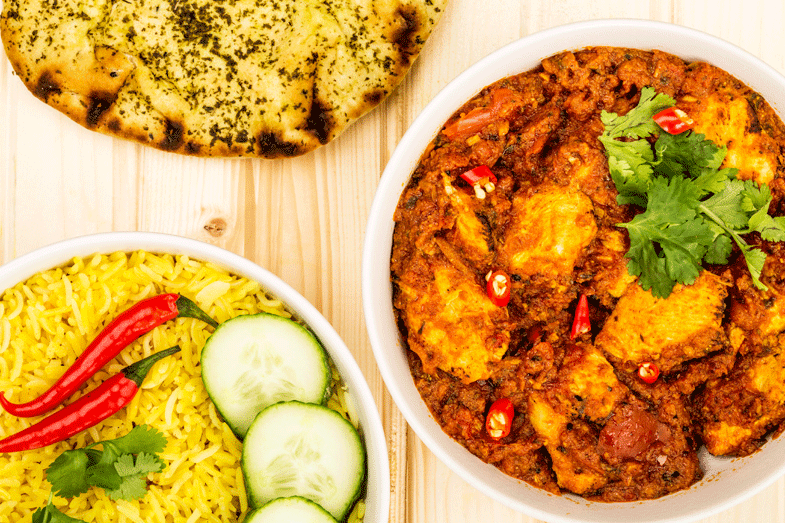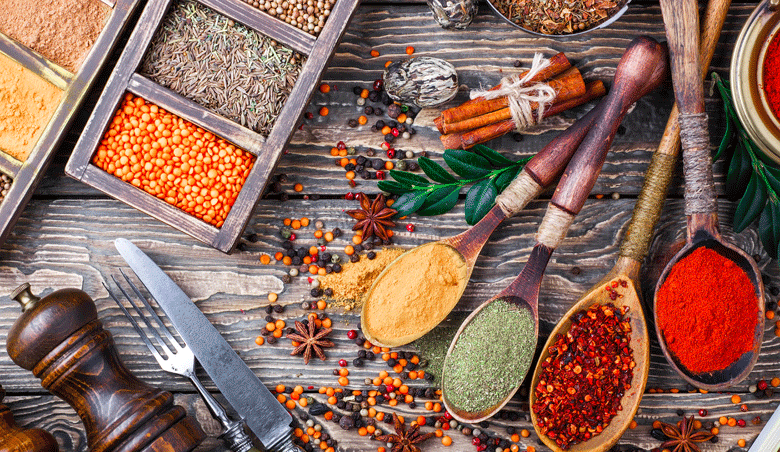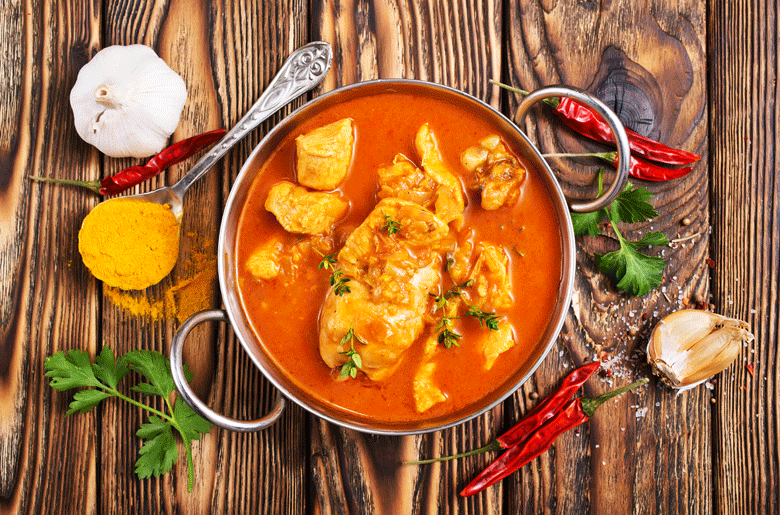
- Serves: 4 to 6
- Serving size: 400 gr
- Calories: 667
- Fat: 47 gr
- Saturated fat: 22 g
- Unsaturated fat: 15 grams
- Carbohydrates: 24 gr
- Sugar: 10 g
- Sodium: 670 mg
- Fiber: 3 g
- Protein: 40 g
- Cholesterol: 242 mg

- 800g boneless chicken thighs, cut into bite-sized pieces
- 1 cup yogurt
- 2 tsp ginger-garlic paste
- 1 tsp garam masala
- 1 tsp turmeric
- Salt to taste
- 50g butter
- 2 tbsp oil
- 1 large onion, finely chopped
- 2 tsp ginger-garlic paste
- 400g canned tomatoes, pureed
- 1 tsp cumin powder
- 1 tsp coriander powder
- 1 tsp garam masala
- 1 tsp dried fenugreek leaves (kasuri methi)
- 200ml heavy cream
- 2 tbsp sugar
- Salt to taste
- Additional butter for finishing
- Marinate the chicken: Mix chicken pieces with yogurt, ginger-garlic paste, garam masala, turmeric, and salt. Refrigerate for at least 2 hours or overnight.
- Grill the chicken: Preheat oven to 200°C (400°F). Arrange marinated chicken on a baking sheet and grill for 15-20 minutes until slightly charred and cooked through.
- Prepare the sauce: In a large pan, heat butter and oil. Sauté onions until golden brown.
- Add ginger-garlic paste and cook for a minute until fragrant.
- Add pureed tomatoes, cumin, coriander, and garam masala. Simmer for 15-20 minutes until the sauce thickens and oil begins to separate.
- Stir in cream, sugar, and fenugreek leaves. Simmer for 5 minutes.
- Add the grilled chicken pieces to the sauce and simmer for another 5 minutes.
- Adjust seasoning with salt if needed.
- Finish with a swirl of cream and a dollop of butter.
- Garnish with fresh coriander leaves if desired.
- Serve hot with naan bread or steamed basmati rice.




 Popular street food
Popular street food

 were known for their lavish and flavourful
were known for their lavish and flavourful Creamy and rich
Creamy and rich
 Bold and robust flavour
Bold and robust flavour with layers of complexity and depth, making every bite an adventure in taste.
with layers of complexity and depth, making every bite an adventure in taste.






